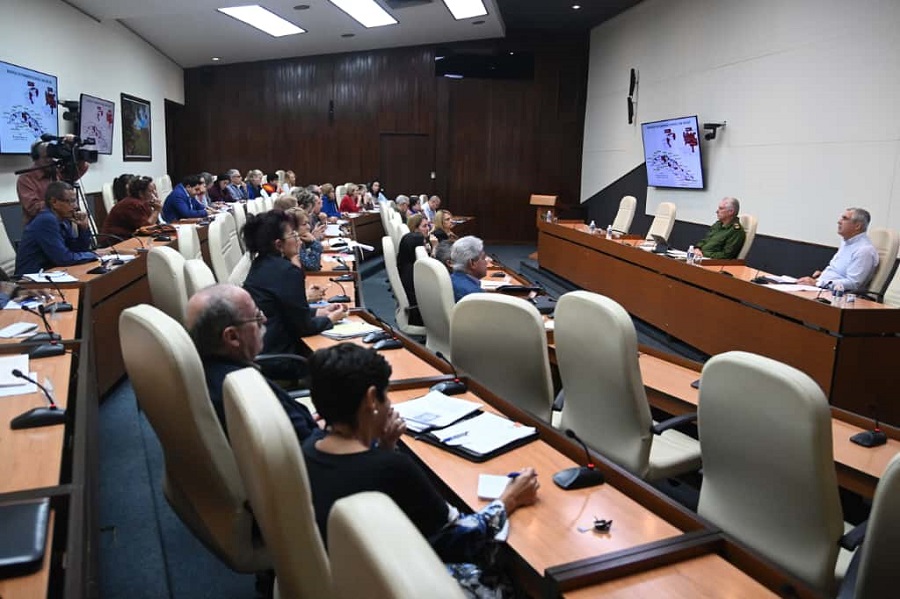“We must confront arboviruses, especially Chikungunya, based on the experience gained during COVID-19, and work from a scientific perspective to develop a treatment and management protocol for the disease,” stated President Miguel Díaz-Canel Bermúdez during the most recent meeting of experts and scientists, this time dedicated to analyzing the epidemiological situation in Cuba.
Chikungunya is not a new disease worldwide, and transmission is currently reported in 119 countries. In the Cuban case, it is important to remember that our population was practically unaffected by this disease, and is therefore more susceptible to it, due to the presence of the main identified vector: the adult Aedes aegypti mosquito.
At the meeting, held at the Palace of the Revolution, Deputy Prime Minister Eduardo Martínez Díaz participated, along with a large group of health specialists and scientists. “It’s a virus that is being transmitted worldwide,” he stated, “and now in Cuba there’s a higher peak because it’s only just being introduced and spreading.”
The specialists emphasized that anyone with a nonspecific fever should go to a health center, as this is the common factor in determining the type of illness and how to proceed with its management, or in ruling out an arboviral infection.
In this regard, Cuba is already working on a protocol for the clinical management of the disease, which includes both home and hospital care. According to the plan for managing Chikungunya, home care presents a challenge for primary health care because it requires high-quality and systematic patient follow-up.
This was the opinion of Dr. Yargen Pomares Pérez, National Director of Primary Health Care at the Ministry of Public Health (MINSAP), who specified that children under two years old with fever, pregnant women, and adults with comorbidities are considered to have warning signs.
At the meeting of experts and scientists dedicated to updating the situation of arboviruses in Cuba, it was revealed that Chikungunya is circulating in 93 municipalities, and the province of Havana reports it throughout its territory.
One of the main concerns of the population is adulticide treatment in homes, because it directly impacts the interruption of transmission.
For Dr. Madeleine Rivera Sánchez, Director General of Surveillance and Vector Control, it is vital to identify the highest-risk areas in order to carry out adulticide treatments, popularly known as fumigation.
Today, mosquito infestation rates are higher in the provinces of Havana, which is why the strategy includes intersectoral collaboration and community cooperation within homes to identify potential mosquito breeding sites.
Cuba maintains constant surveillance of arboviruses, with the Pedro Kouri Institute of Tropical Medicine serving as the national reference laboratory.
Chikungunya is a debilitating disease that progresses through three phases: acute, post-acute, and chronic, during which arthropathy can develop. It has an incubation period of two to ten days after the mosquito bite.
Current research in the country focuses on three key aspects of the disease: prevention, treatment, and rehabilitation.
Given the priority the Government gives to health, President Miguel Díaz-Canel stated that, as happened during the period of confronting COVID, the progress and effectiveness of the protocols for the treatment of Chikungunya will be evaluated every week in the Group of Experts and Scientists. Chikungunya, along with dengue (to a lesser extent), are the two arboviruses that circulate most in the country today.
[ SOURCE: AGENCIA CUBANA DE NOTICIAS ]

